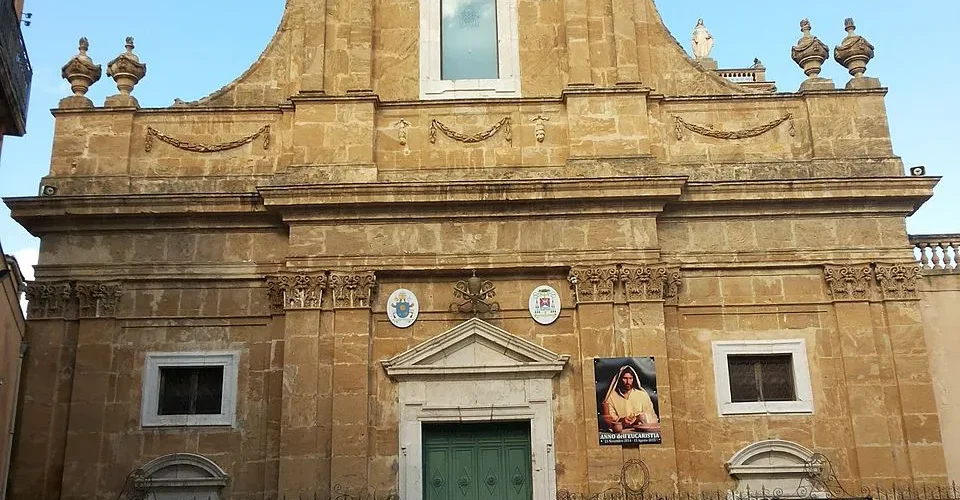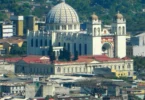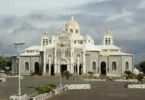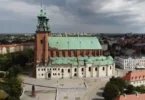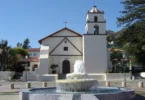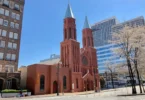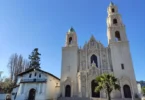Introduction
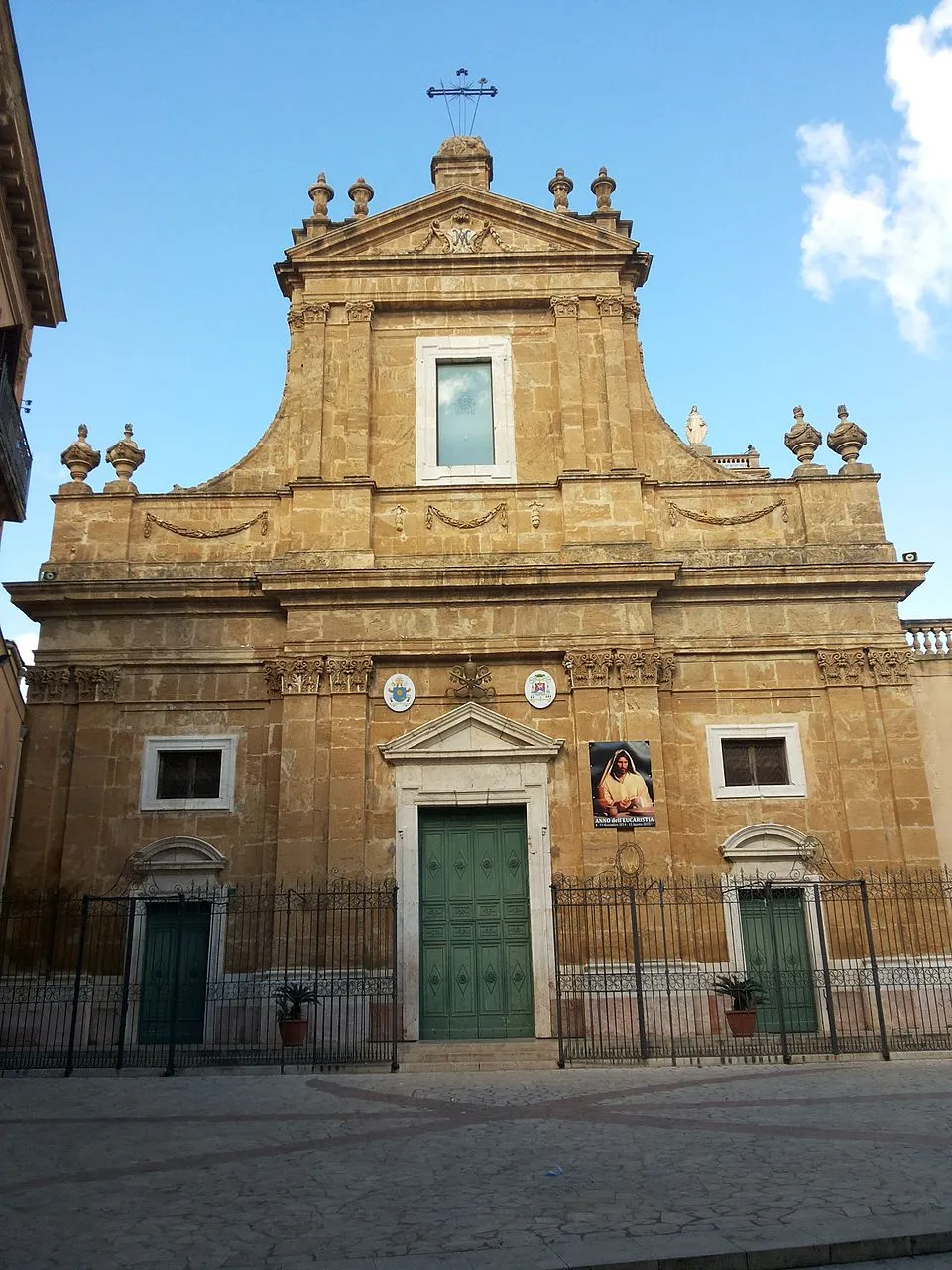
The Basilica of Santa Maria Assunta, also known as the Mother Church or Matrix, is a stunning 14th-century basilica located in the heart of Alcamo, in the province of Trapani, Sicily, southern Italy. Dedicated to the Assumption of the Virgin Mary, this historic church holds great religious and cultural significance for the local community.
Situated just a stone’s throw from Piazza Ciullo, the basilica is a central landmark in Alcamo, easily accessible and rich in history. Its architecture reflects the grandeur of the Gothic and Baroque styles, with intricate details, majestic facades, and beautiful artworks that span centuries. The interior boasts impressive chapels, a magnificent altar, and stunning frescoes that depict biblical scenes and the life of the Virgin Mary.
The Basilica of Santa Maria Assunta not only serves as a place of worship but also as a testament to the artistic and spiritual heritage of Alcamo, attracting both pilgrims and visitors eager to admire its timeless beauty.
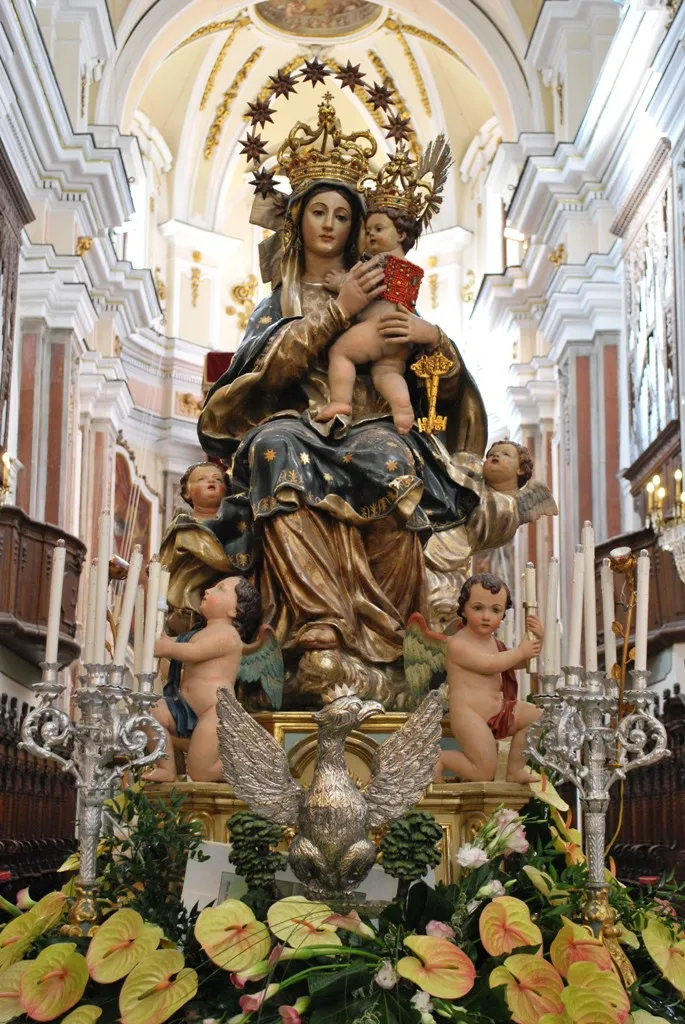
The Basilica of Santa Maria Assunta, also known as the Mother Church or Matrix, is a remarkable symbol of Alcamo’s religious and cultural heritage. Its history stretches back to the early medieval period, reflecting the city’s spiritual evolution and architectural transformations over the centuries.
Early Foundations (1200s–1332)
The first Mother Church of Alcamo was located on the northern side of the San Vito district. This original church was dedicated to Santa Maria Fonte della Misericordia (Our Lady Source of Mercy) and later to Madonna della Stella (Our Lady with the Star). Although it still stands today under the name Santa Maria della Stella, it remains in a state of abandonment, serving as a silent witness to the city’s early religious life.
In 1332, as the residents of San Vito moved closer to the Castle of the Counts of Modica, a new church was constructed in the area where the present Basilica now stands. Dedicated to Our Lady of the Assumption, this new place of worship was inaugurated in 1402. Built in the Catalan-Gothic style, the church originally featured a central nave flanked by two side aisles, a wooden ceiling, and side chapels that were not perfectly aligned.
Expansions and Architectural Evolution (1471–1581)
Over the years, the church underwent several significant expansions and modifications. These changes took place in 1471, 1530–1558, and 1581, reflecting the growing importance of the church within the community. Despite these alterations, some elements of the original structure remain intact, including the bell tower with double lancet windows, which was restored in 1942, the Chapel of the Holy Thorn, and the Baptistery.
By the 16th century, the church had become so central to Alcamo’s identity that it lent its name to one of the city’s four districts, known as the “Maggiore Chiesa”.
Further Developments and Religious Orders (1602–1936)
In 1602, the Company of Santa Maria dello Stellario was established within the church, comprising local peasants and butchers. This religious group later moved to the Church of Stellario in 1625.
The church underwent another major reconstruction in 1669, under the patronage of Archduke Joseph, with the architectural design led by Angelo Italia, a prominent architect from the Society of Jesus. The neoclassical façade, which defines the church’s current appearance, was completed in 1786 by Emanuele Cardona.
In the early 20th century, the church became the spiritual home for several religious congregations. The Sacramentine Congregation was founded in 1918, followed by the establishment of the Ursuline Congregation in 1919, and the Assumption Congregation in 1936.
Modern Era and Recognition as a Basilica (1918–1969)
For much of its history, the church’s dome was covered with vibrant majolica tiles, a feature that remained until the first half of the 20th century when it was replaced with durable copper plates. In 1954, marking the centenary of the Immaculate Conception dogma, a towering 3-meter-high statue of the Madonna was placed on the bell tower, symbolizing the deep Marian devotion that characterizes the church.
In 1969, the Basilica of Santa Maria Assunta was officially elevated to the status of a minor basilica by Pope Paul VI, acknowledging its historical, architectural, and spiritual significance.
The Garden and War Memorial
Adjacent to the Basilica is a garden with roots stretching back to the 15th century. Originally serving as a cemetery for the poor, the area also featured an altar where Masses were celebrated during epidemics, along with a stone cross that housed a sacred shrine dedicated to Our Lady of Mercy.
In 1929, the garden was transformed into a public park, and a War Memorial was installed to honor the fallen soldiers of World War I. The monument was crafted by the sculptor Bentivegna from Sciacca, adding another layer of historical depth to the site.
Jubilee of Mercy and Recent Honors (2015–Present)
In 2015, during the Extraordinary Jubilee of Mercy, the Basilica of Santa Maria Assunta was designated as a “Holy Door” of Alcamo, a recognition it shares with the Sanctuary of Madonna dei Miracoli. This special designation symbolizes the church’s ongoing role as a spiritual gateway for pilgrims and the faithful.
Today, the Basilica of Santa Maria Assunta stands as a living testament to Alcamo’s rich religious history, architectural grandeur, and enduring faith. It continues to inspire both worshippers and visitors from around the world, offering a glimpse into the city’s vibrant past and spiritual legacy.
Architecture of Basilica of Santa Maria Assunta, Alcamo, Italy
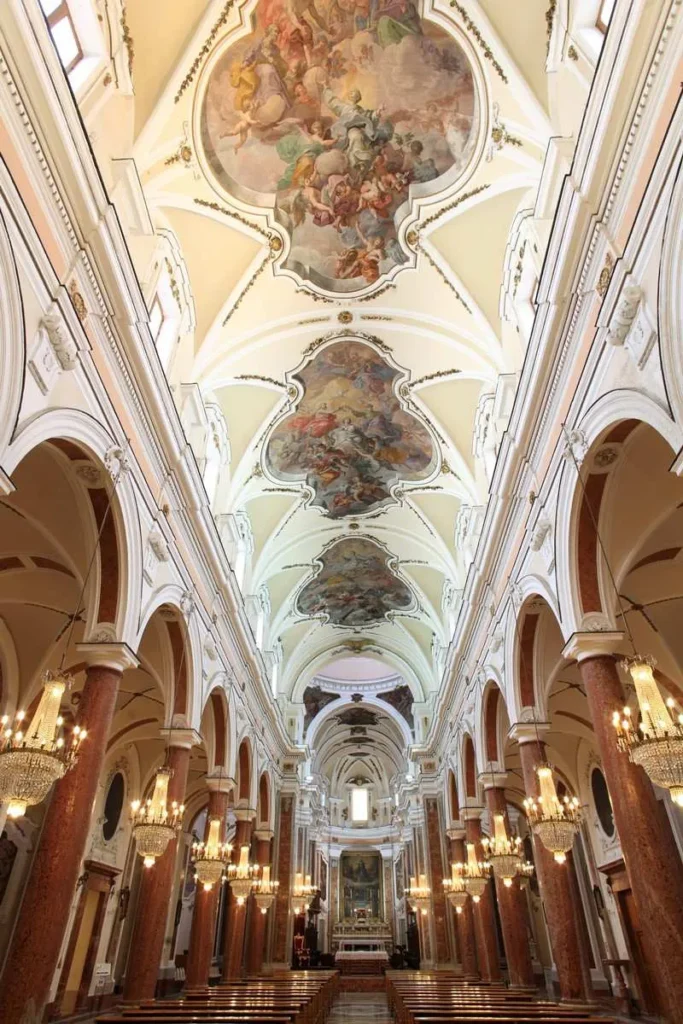
Architectural Layout and Design
The Basilica of Santa Maria Assunta in Alcamo features a basilica plan with three naves, separated by two rows of columns. These columns are made from monolithic red marble shafts, extracted from the nearby Mount Bonifato. The intricate stucco decorations within the church are the work of the Curti family, while the flooring was designed based on the plans of the architect Giuseppe Patricolo.
Frescoes and Paintings
Inside the basilica, there are 38 frescoes painted by the renowned artist Guglielmo Borremans. Among these, three remarkable frescoes adorn the vault, created in 1735. The first fresco depicts the Assumption of the Virgin surrounded by the Holy Trinity, Saints Anne and Joachim, Joseph, John the Baptist, David, and the patriarchs, along with cherubim, angels, and archangels. The second fresco portrays the Coronation of the Virgin, with the Eucharistic Word on her breast, accompanied by the Holy Trinity and angels. The third fresco illustrates the Madonna Regina, crowned and seated among clouds with a sceptre in her hand, flanked by Saint Peter on the right and Saint Paul on the left, with saints who founded religious and monastic orders, including Saint Rosalia, positioned below.
In addition to these masterpieces, Borremans painted several other notable works within the church. These include scenes of the Wedding at Cana and the Multiplication of the Loaves and Fishes on the side walls of the Chapel of the Sacrament, as well as the Catholic Faith assisted by the Paraclete, crowned with flowers and carried in triumph, depicted on the vault of the same chapel. The four evangelists with their symbols are shown writing a motto from the Gospel in honor of Mary, located above the marble pillars. The vault of the Chapel of St. Peter features angels with pontifical insignia and the Chair of Peter supported by the four animals of the apocalypse. Other frescoes depict biblical scenes such as Melchizedek blessing Abraham, Moses and the Crossing of the Red Sea, Elijah bringing down fire on the altar, and the Jewish Pontiff sitting on the chair of Moses, assisted by his priests, with prostrate lepers revealing their wounds. The Chapel of the Crucifix houses a group of angels with instruments of the Passion and the Archangel Michael with the shining cross, surrounded by seraphim. Additional scenes include the Death of Abel, the Sacrifice of Abraham, the Story of the Bronze Serpent, and the Death of Samson, as well as the Virgin with the Eucharistic Word in her breast, the Holy Spirit as a flame on her head, prostrate angels, and the Paraclete in the form of a dove flanked by angels scattering roses. The internal wall above the main door features John the Ecstatic of Patmos and the angel with the golden reed indicating the heavenly Jerusalem, adorned with gold and gems and the tree of life illuminated by the divine lamb. The Chapel of Our Lady of the Rosary includes depictions of Abigaille calming David’s anger against her husband Nabal and Boaz giving wheat to Ruth the Moabite.
Chapel Layout and History
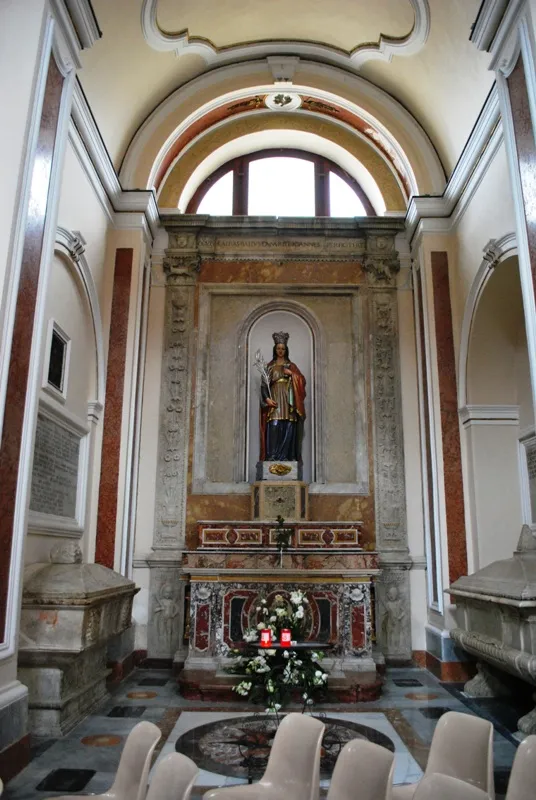
The church comprises 5 chapels in the left nave, 6 in the right nave, and another 6 near the apse. Historically, these chapels were owned by noble families from Alcamo, who were responsible for their upkeep and embellishment. These chapels also served as burial places for the families that owned them, with the exception of the Abbati family.
Right Aisle Chapels
Upon entering the church from the right aisle, one encounters the Chapel of Privilege, which belonged to the Mastrandrea family. It houses a marble altarpiece sculpted by Antonello Gagini in 1519, featuring a triptych of the Madonna between Saints Philip and James, along with the Dormitio Virginis in the predella. Additionally, there are two 17th-century canvas paintings of Saint Charles Borromeo and Saint Philip Neri, with the latter painted in 1637 by Francesco Minutilla, originally located in the Church of Santa Maria del Soccorso.
Next is the Chapel of Santa Lucia, once owned by the De Ballis family, containing sarcophagi of Giovannello De Ballis, the chapel’s founder, and his son Graziano De Ballis. The chapel also features portraits of Don Giovanni and his brother Giuseppe De Ballis, dating back to the first half of the 17th century and attributed to Filippo Paladini.
The Chapel of Saints Crispin and Crispinian contains a canvas painting of the saints, created in 1776 by Tommaso Pollaci. The Chapel of the Crucifix holds the Crucifix of Abundance, crafted by Antonello Gagini between 1519 and 1523. This crucifix, made of mixed stone, is a replica of another crucifix found in the Church of San Domenico in Palermo, created by the Matinati family.
The Chapel of Our Lady of Fatima houses a wooden statue by L. Santifaller (1949) and a canvas painting of Our Lady of Graces, made by Giovan Leonardo Bagolino in 1566. This painting originally came from the Church of Our Lady of Soccorso. The Don Rizzo Chapel, designed by architect Paolo Portoghesi and inaugurated in 1995, features modern architecture dedicated to Don Giuseppe Rizzo, the founder of the Salesian oratory and bank of the same name, and his remains.
Chapels Near the Apse
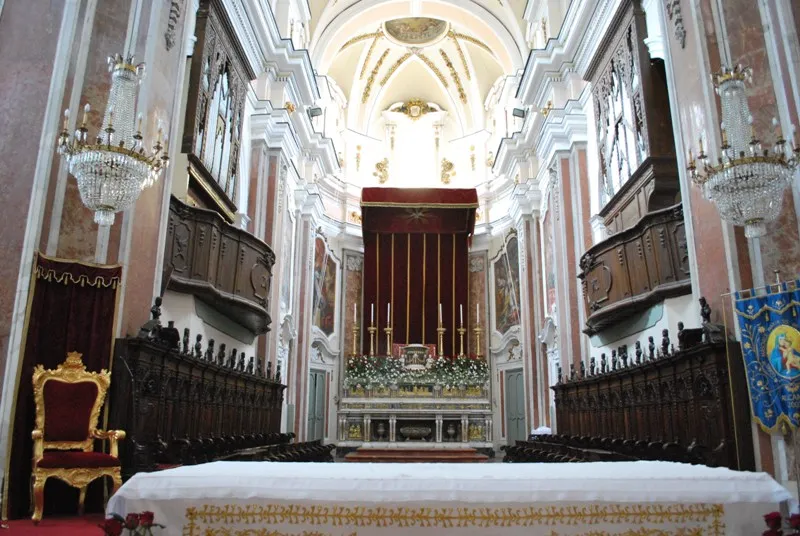
Near the apse, one finds the Chapel of the Sacred Heart of Jesus, which features a wooden statue from 1955 by Luigi Santifaller. The Chapel of the Holy Thorn, formerly known as the “Chapel of the Holy Spirit,” was built in 1430 by order of Palma de Gambono and later passed through marriage to the Marcanza family. It was walled up in the early 1700s and reopened in 1958. Inside, besides a fresco of the Pentecost by an unknown artist, a silver reliquary from 1636 contains the “holy thorn,” believed to have belonged to the crown of thorns of Jesus Christ. According to legend, it was brought to Alcamo in 1535 by Charles V. The Chapel of the Blessed Sacrament features a painting of the Last Supper, created by Giuseppe Carrera from Trapani in 1614, commissioned by the brothers of the Blessed Sacrament.
The apse houses a canvas painting of the Assumption from 1605, attributed to the Flemish painter Franz Van Castel (Francesco da Castello), along with a wooden choir made in 1748. The Chapel of the Madonna dei Miracoli contains a wooden statue of the Madonna, created by Lorenzo Curti in 1720. This statue is carried in procession during the June celebrations of the Madonna dei Miracoli, Alcamo’s most important festivity.
The Chapel of Sant’Anna holds the sarcophagi of the brothers Giovanni and Giuseppe De Ballis from the 16th century, while the Chapel of St. Peter, located in the left transept, features an altar, a gilded marble statue of St. Peter created by Giacomo Gagini in 1586, and the body of Saint Vincent the martyr. Adjacent to the altar, there is a crypt, once open to visitors, where priests were buried.
Left Aisle Chapels
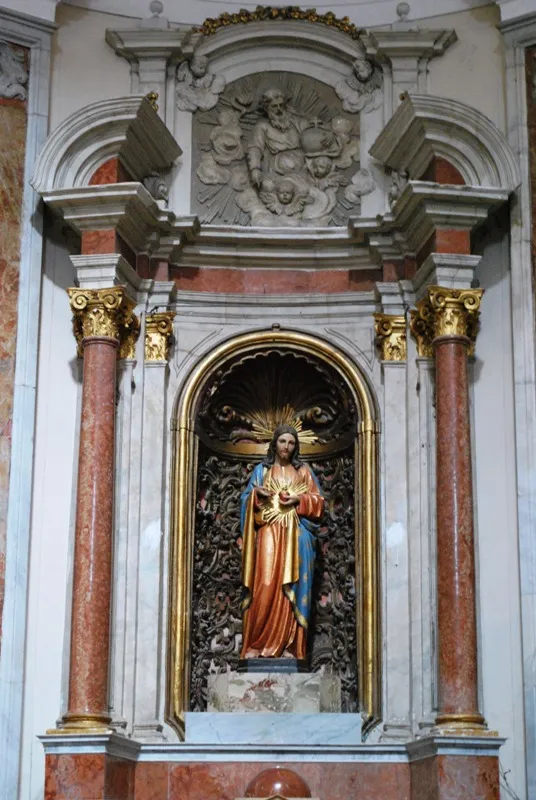
In the left aisle, starting from the chapel closest to the altar, one finds the Chapel of San Francesco, which contains a fresco of the Madonna della Neve created by an unknown artist at the end of the 14th century. The Chapel of the Four Crowned houses a painting of the Four Saints, made by Filippo Randazzo in 1737. This chapel once belonged to the Maestranza dei Muratori, founded in 1548.
The Chapel of the Madonna of Trapani, also known as Madonna delle Grazie, contains a marble statue of the Madonna with Child, created by Giuseppe Marino in 1730, along with a bas-relief of the Dormition of the Virgin from 1529 by Antonello Gagini. The Chapel of the Madonna del Carmine houses two canvas paintings by Guglielmo Borremans and a wooden statue of the Madonna del Carmelo, created between the late 17th and early 18th centuries. The Chapel of the Madonna del Lume, formerly owned by the Abbati family, contains a marble baptismal font by Antonello Gagini from the early 16th century and a canvas painting of the Madonna del Lume by Giuseppe Renda from the late 18th century.
Sacristy and Additional Artifacts
In the sacristy, works attributed to Bartolomeo Berrettaro include the statue of the Madonna del Soccorso and the lunette of the portal of the former Church of Soccorso. The 16th-century door of the bell tower, made in 1499, is also attributed to Berrettaro. Gioacchino di Marzo documented this marble artifact with representations of the Annunciation, the Madonna with Child between the apostles Peter and Paul, and the Crucifixion, reflecting the Sicilian Renaissance style commissioned by Stefano Adragna. Another portal, dating back to 1500, shows phytomorphic decorations on the lateral pillars.
Museum of Sacred Art (Alcamo)
Located on the left aisle of the Basilica of Santa Maria Assunta, a door leads to the sacristy and the Museum of Sacred Art. Established in 2010 at the initiative of the Bishop of Trapani, the museum showcases a remarkable collection of artworks, including paintings, sculptures, and goldsmith works, all originating from the churches of Alcamo. These masterpieces span from the 15th to the 19th century, offering a rich historical and artistic journey through the region’s sacred heritage.
The museum houses a total of 150 works, carefully arranged within a 400-square-meter space. This collection is displayed in what was once the former Oratory of the Blessed Sacrament, annexed to the basilica. The artworks had been preserved in the church and surrounding rooms, thanks to the efforts of Monsignor Vincenzo Regina, who safeguarded them after the devastating Belice earthquake of 1968, which rendered many churches in the area unusable.
Feast Day
Feast Day : 15 August
The Feast Day of the Basilica of Santa Maria Assunta in Alcamo, Italy, is celebrated on August 15th, which is the Feast of the Assumption of the Virgin Mary. This day honors the belief that the Virgin Mary was assumed body and soul into heaven.
Church Mass Timing
Monday : 6:00 PM
Tuesday : 6:00 PM
Wednesday : 6:00 PM
Thursday : 6:00 PM
Friday : 6:00 PM
Sunday : 10:30 AM , 6:30 PM
Church Opening Time:
Open 24 Hours
Contact Info
Address:
Basilica of Our Lady of the Assumption
Piazza IV Novembre, 4, 91011 Alcamo TP, Italy.
Phone : +39092421578
Accommodations
Connectivities
Airway
Falcone-Borsellino Airport (PMO) to Basilica of Santa Maria Assunta, Alcamo distance between 29 min (40.3 km) via A29/E90.
Railway
Alcamo Diramazione Station to Basilica of Santa Maria Assunta, Alcamo distance between 13 min (8.4 km) via SS733 and SS 113 Settentrionale Sicula.

